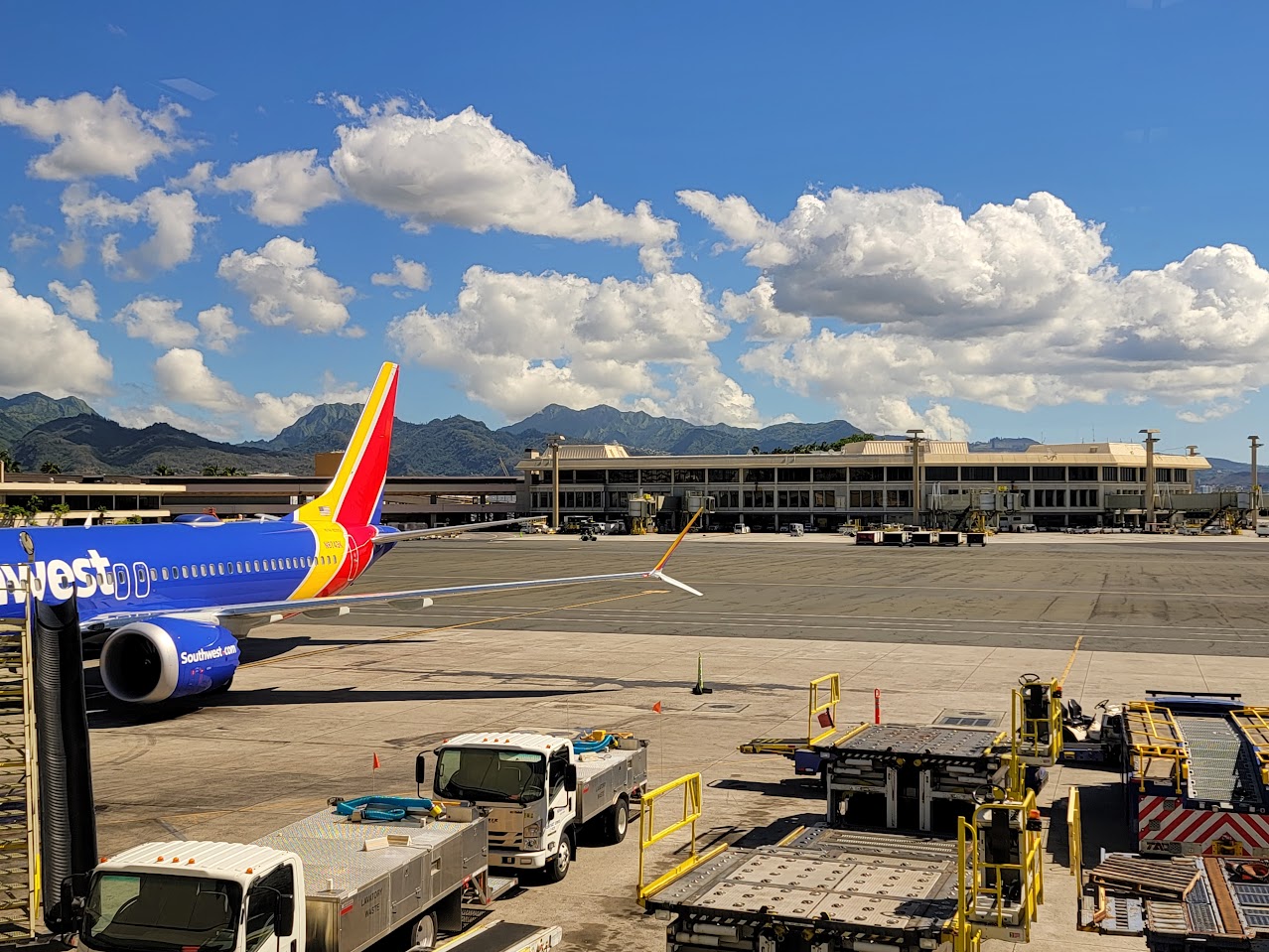In April, a Southwest Airlines flight WN2786 from Honolulu to Lihue on Kauai narrowly avoided crashing into the Pacific Ocean, coming within 400 feet of the water.
In an incident that hadn’t previously been reported, but that was covered by an internal Southwest Airlines report noted by Bloomberg, pilots had aborted their initial landing attempt in low visibility caused by bad weather.
The first officer, who had been handling the controls, accidentally pushed the control column forward and then cut speed, causing the plane to drop from approximately 1,000 feet to just 400 feet above the ocean rapidly – at a rate of over 4,000 feet per minute. Warning alarms sounded due to surface proximity.
The captain instructed increased thrust, and the aircraft climbed the first officer to increase thrust, resulting in a sharp climb at 8,500 feet per minute. The Boeing 737 MAX 8 diverted back to Honolulu safely.

Southwest Airlines Boeing 737 At Honolulu Airport
According to Southwest Airlines,
Nothing is more important to Southwest than safety. Through our robust Safety Management System, the event was addressed appropriately as we always strive for continuous improvement.
The National Transportation Safety Board was reportedly unaware of the incident, but the airline had voluntarily reported it to the FAA.
About a year and a half earlier, a United Airlines 777 nearly plunged into the ocean off Hawaii due to pilot error, as this incident seems to be.


Wow
Even Boeing execs don’t want to fly on a Max 🙁
The aircraft type is irrelevant here. The FO would have made the same mistake regardless of aircraft type.
The reality is that these events have always happened. Social media has allowed these events to be reported to a wider audience.
Airlines and the FAA were shocked by how many mistakes were being made when the ASAP program was in the its early stage. Pilots would hide incidents like this in the past and not report it for fear of losing job and license. Now these events get reported because the ASAP program protects airline employees who report mistakes.
The greater question is whether that is a good thing or not. ASAP programs do increase safety by giving the industry and regulators knowledge of what needs improving but at the same time it can feel to employees like a get out of jail free card.
SWA trying to fly inter island in Hawaii has been rife with problems. Their lack of experience in Hawaii has reared its head in many ways. This appears to be one more example.
Was it a mistake? I hope southwest keeps an eye on this first officer!
I would assume it’s harder to accidentally do this with a side yoke? I’m not a pilot, just asking…
The cited article indicated that a 2,000 foot per minute drop in altitude could be a normal approach. So this was twice as fast of a drop. It also was for around 9 seconds (400 feet per one tenth of a minute or per six seconds). The weather was so bad that a go around was initiated due to visibility. I would think that there could have been a downdraft in conjunction with the “newer” pilot flying errors of pushing the yoke forward and cutting power. Too bad that there isn’t a second by second recording of what happened including a transcript. I wonder if it was the warning alarm that caused a reaction or if a reaction was already initiated.
It happened 2 months ago and not a single passenger reported this? I find that odd.
This happened in April. I have not heard about this incident until yesterday.
For those who have not executed an auto GO AROUND in a full up B-737 NG, as I recall the engagement of the GO AROUND mode does result in a rapid advance of thrust to MAX POWER and an abrupt nose up pitch. The main consideration is not passenger or pilot comfort but to avoid contact with the earth. Consequently it could be somewhat disconcerting for a relative new FO at the controls. The auto GO AROUND has flight characteristic seldom, hopefully, experienced in regular line flying.
We can only speculate here. Factors such as poor visibility and FO inexperience may have played a role. I could imagine a scenario where the FO became disoriented without visual references and was startled by the unusual pitch up initiated by the auto go around, as mentioned by One Trippe. The FO may have overcorrected. What worries me is why the Captain didn’t notice the negative vertical speed until the (presumably) GPWS alarm